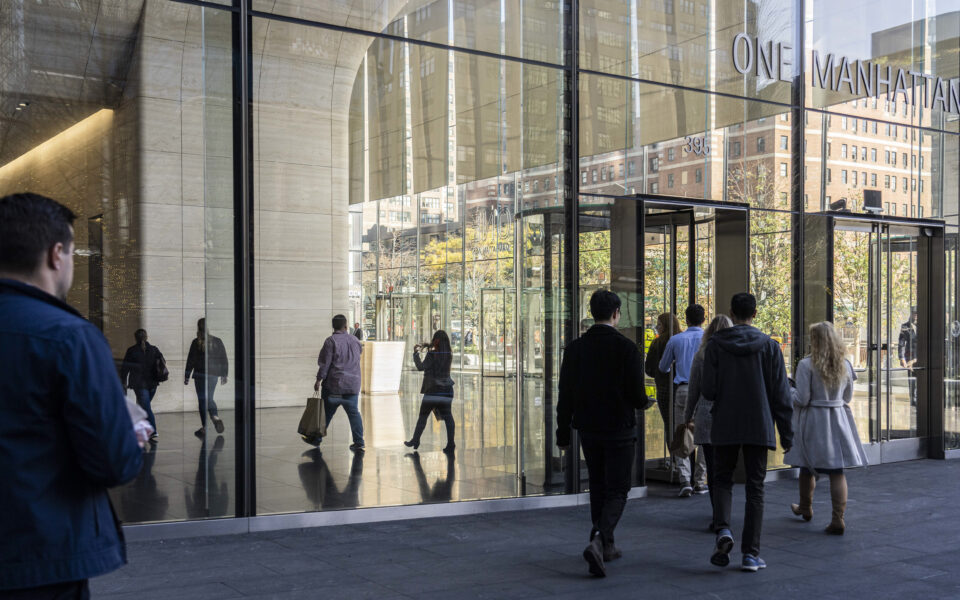Why office buildings are still in trouble

With the pandemic receding, children back in school and businesses telling employees to return to the office, the companies that own big office buildings were hoping to move on this fall from a nightmarish two years.
Instead, things got worse.
More office workers are back at their desks than a year ago, but attendance at office buildings in New York, Boston, Atlanta, San Francisco and other cities is languishing well below pre-pandemic levels. As leases come up for renewal, companies are often opting for smaller offices, saddling landlords with millions of square feet in vacant space. And more space is expected to hit the market in the coming months as companies like Meta, Salesforce and Lyft lay off workers. More than 100,000 technology workers have lost their jobs this year, according to Layoffs.fyi, a site that tracks job cuts.
Higher interest rates are also weighing on the industry. Many landlords are no longer willing or able to acquire and spruce up older buildings or build new ones. Seeing little upside in holding on to sparsely occupied buildings and paying interest on mortgages, some landlords are handing over properties to lenders. Others are seeking to convert office buildings into residential complexes, though that can be expensive and take years.
Wall Street investors appear to think the office space sector is in for a deep slump. The shares of large landlords and developers are trading close to or below their pandemic lows, underperforming the broader stock market by a huge margin. Some bonds backed by office loans are showing signs of stress.
The value of U.S. office buildings could plunge 39%, or $454 billion, in the coming years, according to a recent study by business professors at Columbia University and New York University.
“We see lots of tenants not renewing their leases, going either fully remote or renewing their leases but signing up for less space,” said Stijn Van Nieuwerburgh, one of the authors of the paper and a professor specializing in real estate at Columbia Business School. “It all adds up.”
A sickly office sector can hamper the recovery of cities that depend on the jobs and tax revenue that commercial buildings provide. For example, New York City collected about $6.8 billion in property tax revenue from office towers in the fiscal year that ended in June, or around 9% of its total tax revenue, down from $7.5 billion in the previous fiscal year. The market value of office buildings in the city fell $28.6 billion last year, the first such decline since at least 2000, the Office of the State Comptroller estimated.
In a sign of how fast the market has turned down in some places, companies are giving up space that they leased only months earlier. Meta, the parent of Facebook, recently decided to sublet all the space that it signed up for about 10 months earlier in an Austin, Texas, tower called Sixth and Guadalupe. Meta must still pay the rent on 589,000 square feet, but its decision to find somebody else to occupy the space could push rents down across Austin, which until recently was seen as a thriving and growing technology hub.
The struggle to fill empty offices is a national phenomenon.
The amount of office space leased in the United States in the three months that ended in September was nearly one-third below the quarterly average for 2018 and 2019, according to Avison Young, a commercial real estate services firm.
Office vacancy rates across the country stand at a record 19.1%, with Chicago, Houston and San Francisco running above 20%, according to Jones Lang LaSalle, a commercial real estate services company. That includes the record 185 million square feet, or 3.85% of total office space in the country, that is available for sublet. Another 104 million square feet will come onto the market through 2024 as new office buildings are completed, according to Jones Lang LaSalle.
In some ways, New York, the largest office market in the country, with 540 million square feet of space, is particularly vulnerable. Older office buildings in the city are losing their best tenants to new, well-equipped buildings in neighborhoods like Hudson Yards on Manhattan’s Far West Side, leaving lots of empty office space in midtown and downtown.
“The availability downtown is at a record high of 20.2%,” said Franklin Wallach, an executive managing director at the brokerage firm Colliers. “These are older buildings in the canyons of Wall Street, and we’re seeing large vacancies, not because of one single tenant but tenant migrations that are all hitting at once.”
Office landlords made it through the pandemic in reasonable health because corporate tenants with long leases kept paying rent even if their employees weren’t coming into the office.
But the landlords, who typically flash sunny optimism even in dark days, are now sounding more cautious. They acknowledge that many corporate tenants are sticking with some form of work-from-home policy, and their bullishness is mostly focused on new buildings.
Still, they believe demand will eventually come back. William C. Rudin, the CEO of Rudin Management, a New York developer and landlord, said that companies often give back space in downturns. But when the economy improves, corporate executives change their minds and say, “Oh, my God, we don’t have enough space. We’ve got to take more space.”
The work-from-home revolution is not confined to the coasts. Even in Texas, office attendance has not fully recovered; it is 53% of pre-pandemic levels in Dallas, 57% in Houston and 62% in Austin, according to Kastle Systems, a security card swipe company.
Many landlords say Kastle’s data does not reflect attendance in their buildings. Kastle reports the New York metropolitan area weekly attendance at a little less than 50% of pre-pandemic levels, but Rudin said his towers were on average roughly 65% full over the course of a week. He added that occupancy was much higher at buildings occupied by financial companies, many of which have required employees to come back.
Office landlords borrow money to acquire and construct buildings. So far, most of them are making debt payments, according to data from Trepp. But signs of stress are appearing in commercial mortgage-backed securities, which are backed by payments on office loans and then sliced into layers, where the top layer is more protected against defaults than those at the bottom.
“I think there is more difficulty to come,” said Gunter Seeger, a portfolio manager at PineBridge Investments, which invests in the debt used to finance office buildings. “It happens in slow motion. You see it coming, but it doesn’t unfold quickly. We’re limping along.”
Investors, for instance, are nervously eyeing bonds backed in part by lease payments from tenants of 300 North LaSalle, a Chicago building owned by the Irvine Co. Boston Consulting Group and Kirkland & Ellis, a law firm, occupy just over 60% of the building, and both are set to leave in a couple of years. The price of one of the bonds, which carries a middling rating, has slumped 22% this year, implying a yield of around 17%.
Representatives for the Irvine Co. and Kirkland & Ellis declined to comment. Boston Consulting Group did not respond to requests for comment.
Williams & Connolly, a law firm, moved from a building in downtown Washington to a new development at the Wharf. Hines, the owner of the older building, which had a 10-year, $135 million loan against it, agreed this fall with its lender, Allianz Real Estate, to sell the building.
A spokesperson for Allianz declined to comment.
An executive at Hines, a privately held real estate investment firm, said that the building, which it has owned for more than 30 years, had been a profitable investment. “We continue to operate the building and are working with the lender to sell the property to a third party,” Chuck Watters, senior managing director at Hines, said in a statement.
Landlords are also finding that some tenants are making do with much less space.
In August, KPMG signed a 20-year agreement to move to Two Manhattan West, a skyscraper expected to open next year on the edge of Hudson Yards. KPMG, which has adopted a hybrid work model, is leaving three older buildings and reducing its lease space by 40%.
“For our business, we believe a hybrid future – a blend of fully remote, hybrid and on-site teams – will deepen connections among current and potential employees and leaders, delivering us a competitive edge in the marketplace,” said W. Scott Horne, a KPMG spokesperson.
Rudin, whose company owns two of the buildings from which KPMG is moving, said it had a “very good retention rate” but acknowledges that tenants’ needs change, adding that his firm was improving older buildings and having success leasing them.
Companies may struggle to shrink their office space if most employees are expected to come in, say, three days a week. But over time, managers will become more adept at minimizing space. And cutting costs could become a priority if the economy slows sharply or slides into a recession.
Van Nieuwerburgh, the Columbia professor, calculates that New York office space on average costs about $16,000 a year per employee. “That’s real money,” he said, “and companies will try to save that.”
This article originally appeared in The New York Times.






